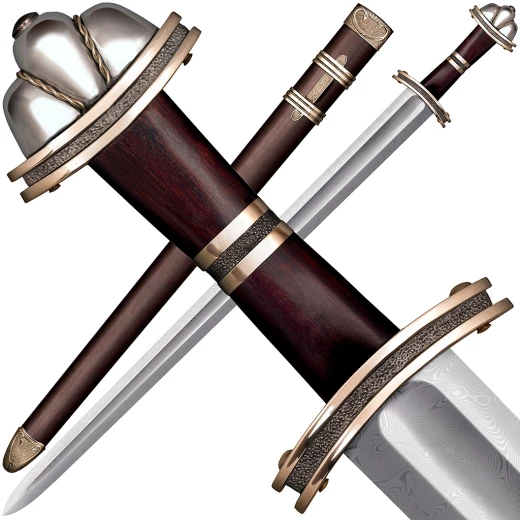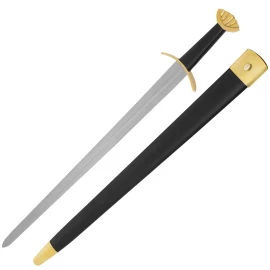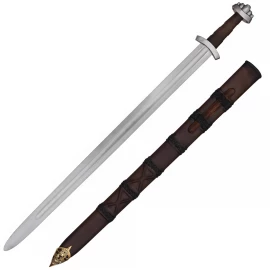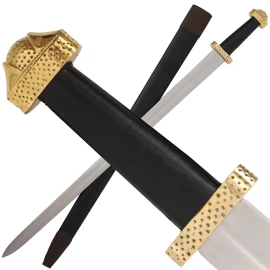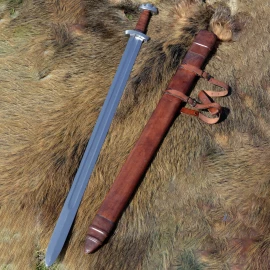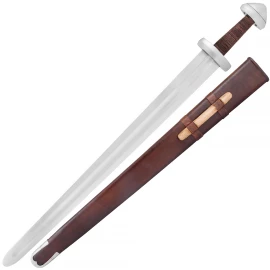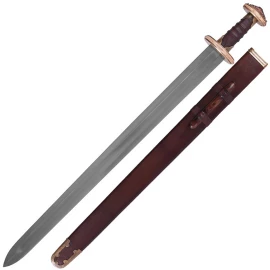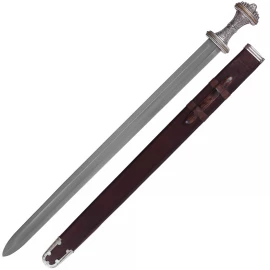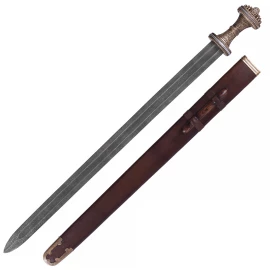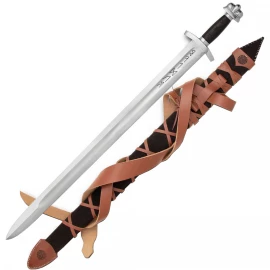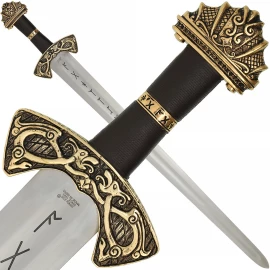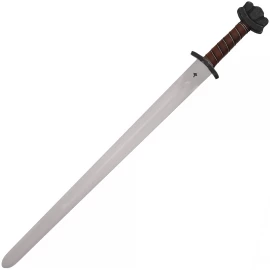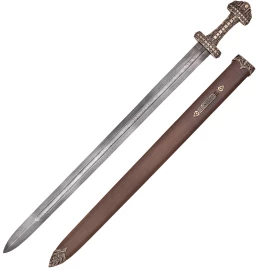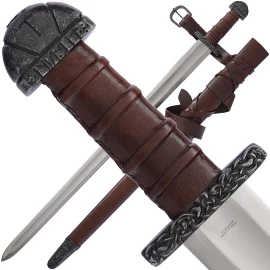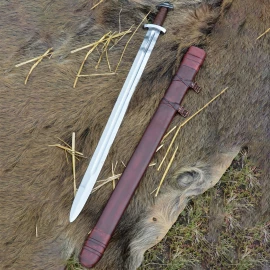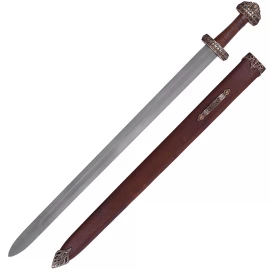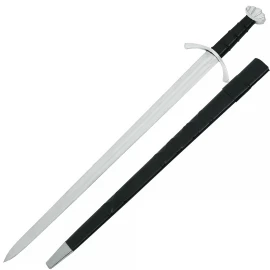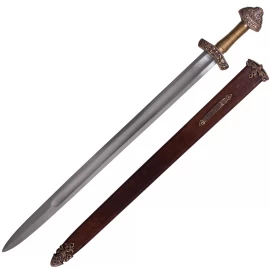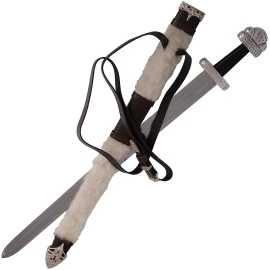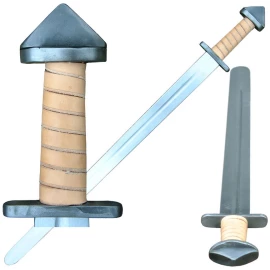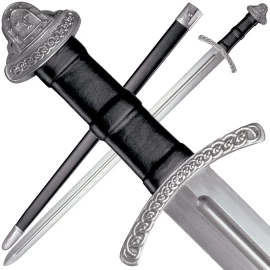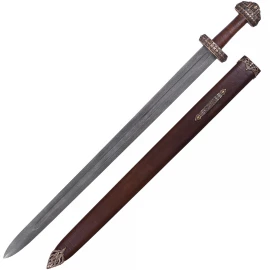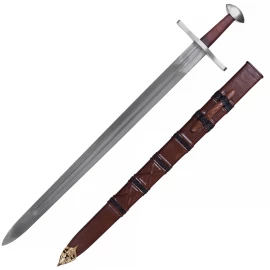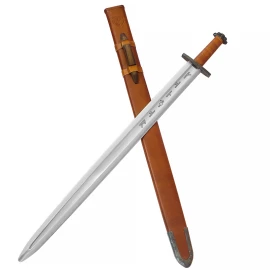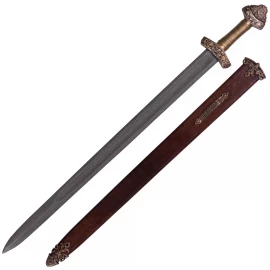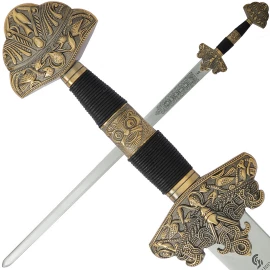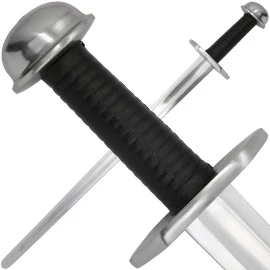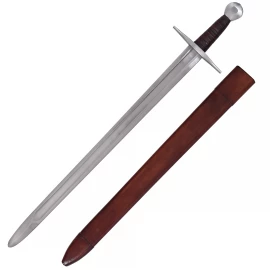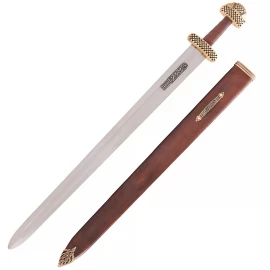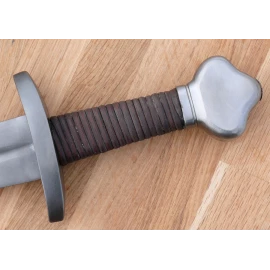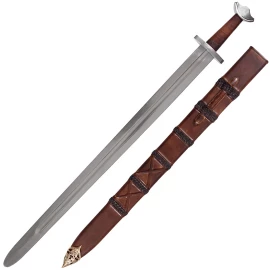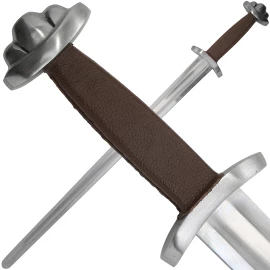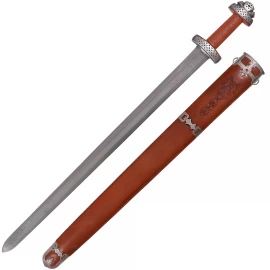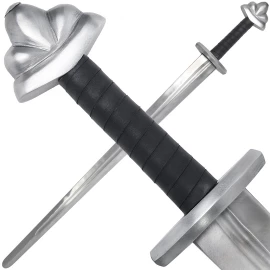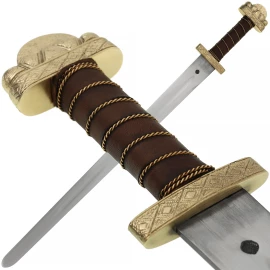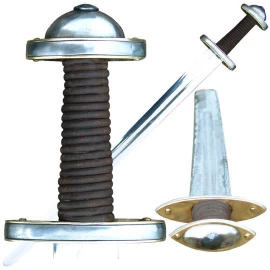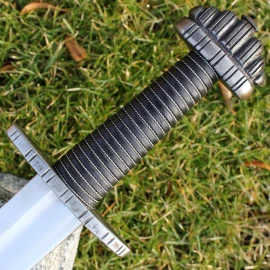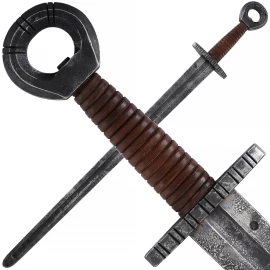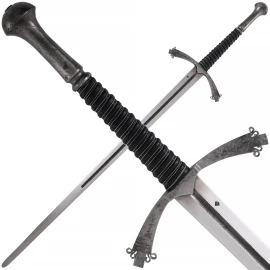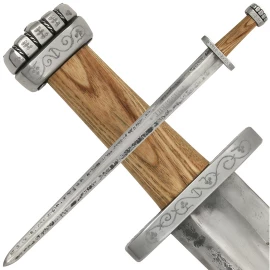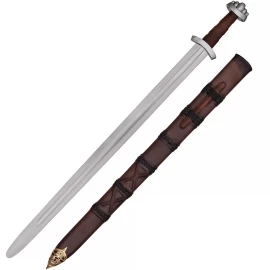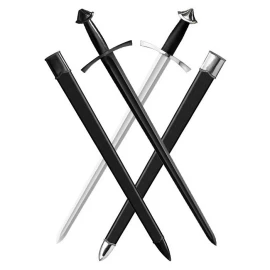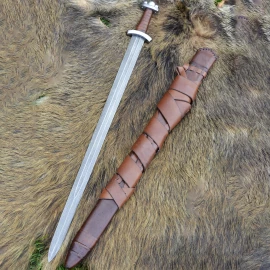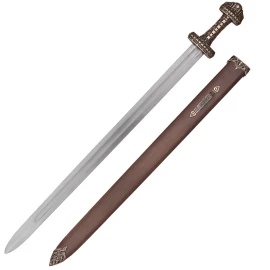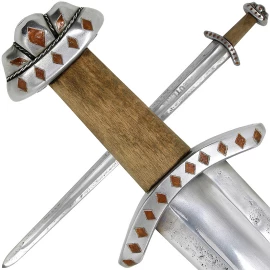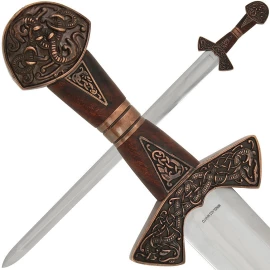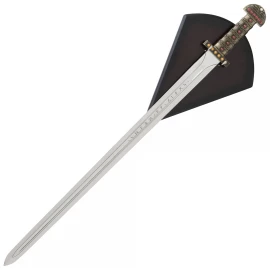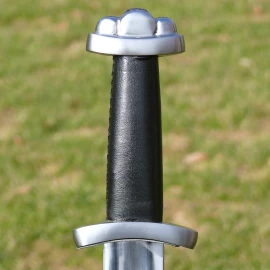Damascus Long Sax
The Damascus Viking Sword and its companion Long Sax are hand-forged from Cold Steel®'s finest Damascus steel and come fully sharpened. They include some superb appointments, each featuring a beautiful rosewood grip and a classically styled guard and pommel made from brass and steel, sandwiched in the ancient fashion and polished to a lustrous shine. Further product information ...
Would you like to be notified as soon as the item is in stock?
You will receive a short e-mail as soon as we have it back in stock.
Damascus Viking Sword
Was it your destiny to be a Viking Earl? If you've got warrior blood in your veins, then Cold Steel® has two weapons you're bound to love.
- Blade material: Damascus steel
- Overall length: approx. 94cm
- Blade length: approx. 76.2cm
- Blade thickness: approx. 4mm
- Handle length: approx. 17.8cm
- Weight: approx. 1125 g
- Incl. wood and leather scabbard with brass fittings
- Cold Steel® Product No.: 88HVB
The sword comes with an impressive wood and leather scabbard that includes a belt loop and a brass throat and chape accented by deeply embossed decorative elements. The Long Sax comes with an historically correct, thick leather scabbard complete with an embossed brass welt, chape and carrying rings.
Damascus Steel
The terms Damascus steel, damascene or pattern welded designate a compound steel forged out of two or more different types of steel. It is named after its birthplace, the Syrian city of Damascus, a former stronghold of the patterned steel production. As a common practice, a harder high carbon steel and a milder low carbon steel are repeatedly forge welded and folded together. The high carbon steel ensures a higher hardness, a better temperability and longer lasting edge retention, whereas the milder steel confers greater blade flexibility and tensile strength. This procedure, which arose in a time where steel qualities were often low and inconsistent, enables to combine the positive attributes of the various steel grades. Besides, the different shadings generated by the varying carbon content of the alternating layers engender strikingly beautiful patterns. Undoubtedly, these unusual patterns partly explain why inherent magical properties were attributed to the Damascus steel blades of the Middle Ages.
We are here for you!


